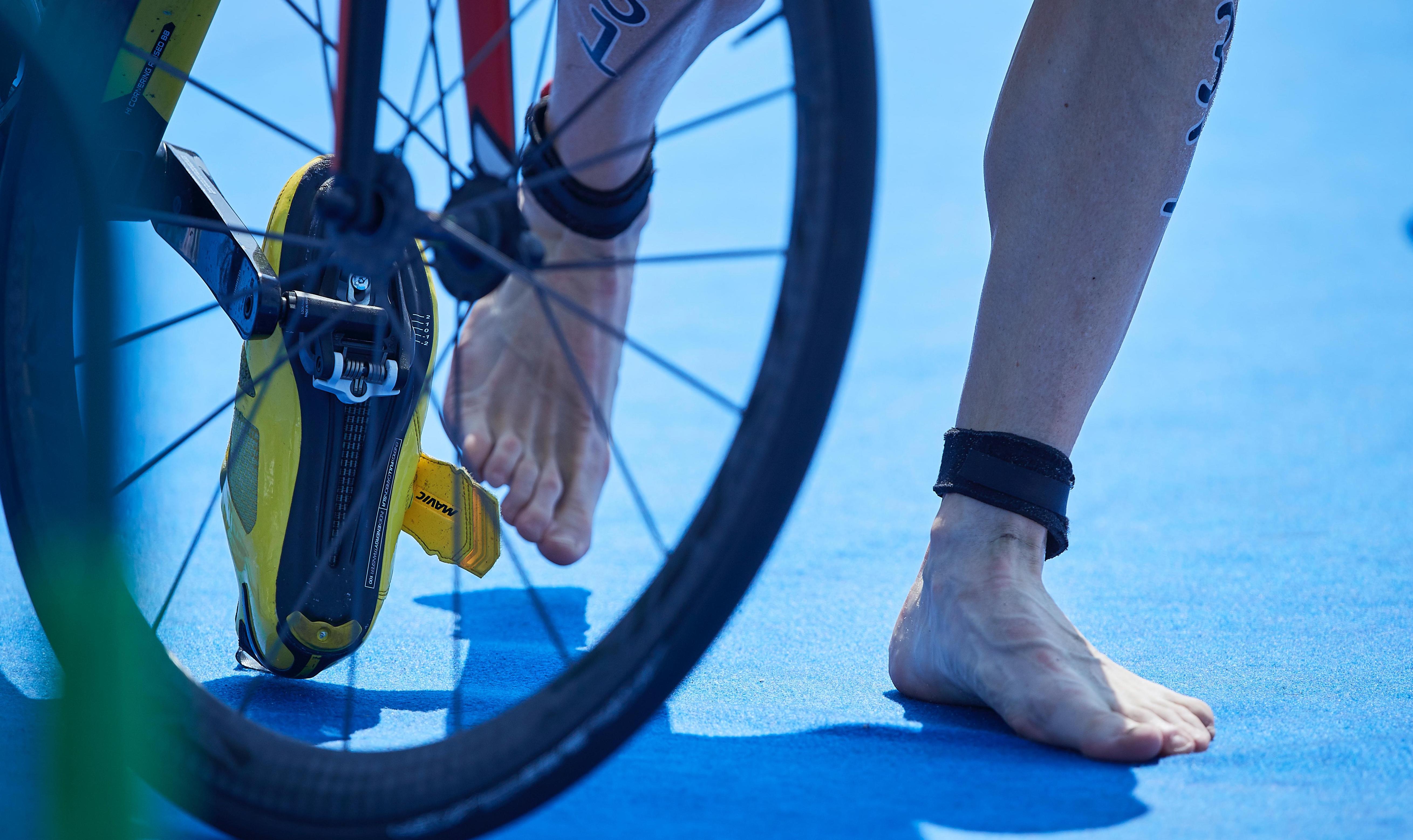First aid for acute injuries in triathlon
Triathlon is a sport where acute injuries are rare (compared to the risk for overuse injuries). However, be prepared for acute injuries, when you do your dry-land training, as for instance ankle sprains can occur. Also, head injuries and shoulder dislocations can happen when you crash with your bike.

The recommended treatment for most acute injuries is referred to as the PRICE principle. This is an acronym for protection, rest, ice, compression, and elevation.
The goal of this treatment is to:
- Reduce pain and swelling
- Lay the foundation for a good rehabilitation
We recommend continuing the treatment for at least 48 hours after the time of the injury. However, some of the elements are more applicable than others.
Basic principles
PRICE is comprised of basic principles in the treatment of acute injuries, but should always be tailored to the injury type and site. Always use common sense. If a serious injury is suspected, contact emergency services.
Protection
In this context, it means to remove the athlete from play to protect against further injury. This is especially important in the first 48 hours after the injury occurred.
Rest
The athlete should not continue with any activity following the injury. A general recommendation is that the knee should be offloaded during the first 24 hours.
Ice
The aim of applying ice is to relieve pain. 20 minutes with an ice pack every other hour for a day or two has a good effect.
Even though there are many commercial ice products available, the best solution is often a plastic bag filled with crushed ice and some water. Place a damp towel between the ice pack and skin.
Compression
The most important aspect of first aid treatment for acute knee injuries is compression. This can reduce swelling. Use an elastic bandage and start wrapping it around the knee. Start from below the knee and finish slightly above it. The bandage should be as tight as possible, without stopping blood flow past the injury site. Signs that the bandage is too tight can include numbness, tingling and increased pain.
Elevation
Swelling in the knee can often be limited by keeping the knee elevated. Let the foot rest above hip level on a chair or cushion. This is particularly important in the first few hours, but it is best to continue to keep it elevated as much as possible for the first 24 hours. Remember that compression should be maintained around the clock to keep internal bleeding (swelling) to a minimum.
Head injury
When in doubt, call the emergency number immediately.
A head injury must always be taken seriously. When an athlete sustains a head injury, it is important to prioritise first aid: check whether the athlete is conscious, breathing, and whether they have a pulse. At the same time, it is important to support the neck to avoid movements that can lead to paralysis if there is a fracture to the neck. The next thing to consider is whether the athlete can be moved away from the place where the injury happened. If they are conscious and experiencing neck pain, or show signs of displacement or neurological symptoms of spinal cord injuries (immobility or numbness in the arms and legs), they need to be transported on a stretcher with neck support.
If the athlete is unconscious, but breathing, then it should be assumed that there is a neck injury until proven otherwise. However, airways and ventilation should be prioritized over potential back and neck injuries. If there are signs of severe head or neck injury, seek emergency medical care. Whoever has the most medical experience on site should take charge.
Read more about treating concussions here.
Shoulder injury
Stop your activity if you suspect your shoulder is injured. Start PRICE treatment immediately.
Read more about treating acute shoulder injuries here.
Dislocated shoulder
If an athlete is tripped up from behind or falls on an outstretched arm, the shoulder can become dislocated. This is very painful. An authorized health professional can relocate the shoulder. Otherwise, go straight to the emergency room. Whenever you are far away from the hospital it's recommended to try to relocate the shoulder yourself by using this technique: Clasp both your hands around a bent knee, then drive the knee into your hands and away from your torso whilst leaning backwards. X-rays are required to confirm whether the relocation was successful.
Hand or fingers injury
If your hand, wrist or fingers are injured, stop your activity and start PRICE treatment immediately. If your finger is displaced, it could be due to a fracture or a dislocated joint. Go straight to the emergency room.


